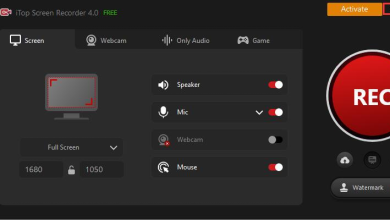Professional-Level Web Design Tips for Beginners

When creating/designing your website, the user experience must be considered throughout the entire building process. This is especially true with its design, as a poorly-designed website could leave your visitors confused, frustrated and unlikely to revisit your website. Even if you wouldn’t consider yourself someone with good eye for web design, you can still build a beautiful, user-friendly website that visually stands out. From our design gurus to you, here are the top seven web design tips for all levels of designers to create a stunning website.
Use No More Than 3 Fonts
The more fonts you incorporate into a website, the messier it will look. Aim to have a separate font for your headers, your body content and one other element (either your logo or calls-to-action). If your brand guidelines insist you stick to one font, that’s perfectly fine! Just make sure the font is legible and a good size (14-16 px is the sweet spot for your content’s size).
Selecting the Best Colors
Your website should have a cohesive color tone to it. Just like fonts, don’t include a ton of different colors; select a color scheme. Also, strive to keep all major call-to-action buttons the same color (make this color pop on the page), so visitors can recognize each CTA.
If your logo has a primary color, select two or three complimentary colors with an online tool. Paletton.com and Coolors are great tools to help you find the best supporting colors for your website.
White Space is Your Friend
Do you have a room in your house with neutral-colored walls? Our guess is you probably do; it would be very distracting to have a crazy-printed wallpaper all around your home. Think about it: if your home was filled with bold, busy walls, no one would ever notice your home’s features or furnishings!
This same principle is also applied to websites. Don’t try to fill every pixel of your pages with something; embrace the white space. By leaving white space on your website, you’re drawing your visitors’ attention to areas that you want them to focus on. Plus, it also helps your site look cleaner and uncluttered, which is design 101.
Get to Know a Grid System
A clean website design means every text block, button and section is aligned perfectly. This is where a grid system comes into play; this may be a more “intermediate” tip but it will make a big difference with your website’s design. The next tip and this both go hand-in-hand, so keep on reading!
Design with Mobile in Mind
Responsive web design is today’s norm for website design. A grid system is important to learn because you will not be able to design a responsive website without one. Check out our post all about responsive design and keep these tips in mind.
Implement Content Hierarchies
Oftentimes, a page full of text can leave users clicking the back button of their browsers. For your blog posts or any pages that will have a list (i.e.: your products/services page), use subhead hierarchies with short body copy to follow (hey, that’s kind of like this post). This will break up the text, which will make it easier to read and scannable for visitors.
The Easier the Navigation, The Better
Don’t make it hard for your visitors to surf around your site; keep your navigation simple and visible on every page. Make your logo a part of your navigation and have it be clickable to the homepage. As long as your navigation is simplified as much as possible, you’ve hit “web design gold.”
Website design can be as fun as you make it! A good first step to website planning is to design your website through the eyes of your audience/visitors. Think about how they want to perceive your website and what elements they want to see. If you can strive to design your website using the tips above coupled with the user experience, your website will naturally become a well-designed website.




